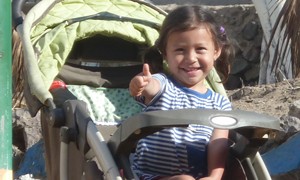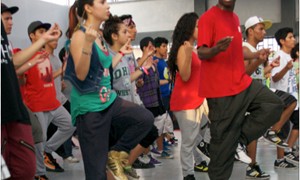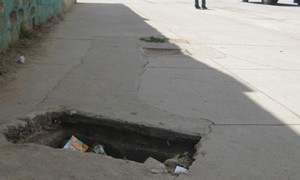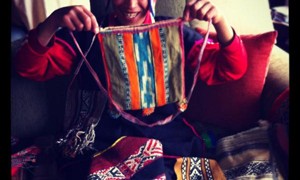Have you ever had one of those amazing days that you still reminisce about, even though you can’t figure out what exactly was so great about the day? I just had a day like that in February on my most recent trip to Lima. It turned out to be a day that encompassed a lot of what I love about living in Peru.



I’ve always wanted to learn how to dance. I’ve also always known that I’m not very good at dancing. I’m clumsy and forgetful, which are the two qualities that work against learning choreography.
I think I have stayed in almost 10 different hotels in Lima during my trips there as it’s only 8 hours away from Huancayo by bus. Ten is a far cry from over 100 options in the city and I’m no expert, but my experiences could give you a feel for the variety in the area and what you could face.
A taxi driver in Lima recently robbed one of my good friends at gunpoint. Although you need to be cautious, I wouldn’t consider the level of danger in Peru much higher than other Latin American countries. In fact, my post on scary men is an example of the goodness that can always be found and this week’s follow-up guest post by Dr. Vincent Tufano on making the best of a bad situation recounts how lucky breaks factor in as well.
Last December, I was captivated by what seemed to be a simple story that made headlines in Peru: Ricardo Apaza wasn’t allowed back into the movie theater after taking a second bathroom break and forgetting his ticket. The catch? Ricardo wore traditional Andean clothing, he was visiting from his rural hometown, and this incident happened in Lima, the busy capital of Peru. His enraged friend Pierina Papi called it racism.
Every October, the country turns purple for mes morado (purple month) in honor of the Señor de los Milagros (the Lord of Miracles). Its history dates back to the 1600s to an Angolan slave in Lima.
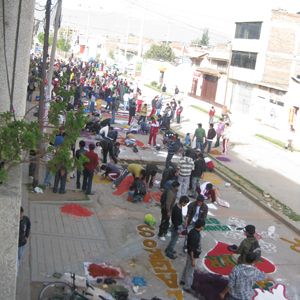
This very wall would survive over three centuries to the present day. Soon after the first miraculous occurrence, the viceroy ordered the wall destroyed after noticing all the people worshipping it with what seemed like pagan rituals, but strange things would happen to every person that approached the wall with the intention of destroying it or erasing the painting. A painter started trembling and felt goosebumps in fear when he approached the painting. A soldier witnessed the image of Christ become more beautiful and Christ’s crown turn green. People began protesting as they heard about these new miracles and the order was eventually revoked.
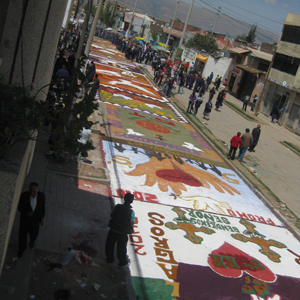
The procession has been an annual event since then. It happens all over Peru and around the world, including Australia, Egypt, Italy, and the United States to name a few countries. Here in Huancayo, companies and schools wake up early in the morning to prepare “carpets” of woodchips along the procession path as the Señor de los Milagros makes a roundtrip pilgrimage to and from the central Catholic church at the main plaza. It’s also tradition to eat turrón (a nougat-type dessert) during purple month — as the story goes, Doña Pepa, an African slave, dreamed of the recipe the night that the Señor de los Milagros cured her of paralysis.
What is the largest tradition, procession, or parade in your city?
“El tiempo me ha enseñado que la felicidad sólo es verdadera cuando haces lo que quieres con la gente que quieres.” – Vania Masías Málaga [Time has taught me that happiness is only real when you do what you want with the people you love.]
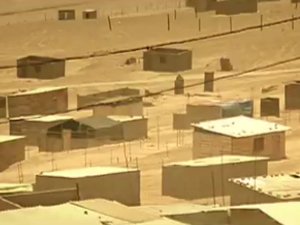
Ventanilla is the other face of Peru’s capital city — a district on a sandy hill, haphazardly established long ago by poor, squatting families who couldn’t afford living in the city center. The instability of the houses constructed on sand mirrors the unpredictability of lives in poverty. At least one advantage of living on a sandy hill is that the environment is favorable for practicing flips and acrobatic tricks. As such, a group of boys from the neighborhood banded together to form “The Sand Angels.”
Vania’s chance meeting with these angels changed the direction of her life.
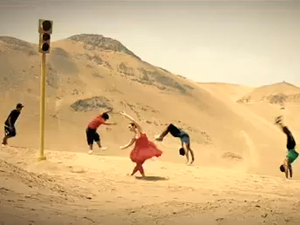
Her professional dance studio in a more wealthy part of town funds free classes for impoverished yet talented dancers. Now, one of her graduates is a professional dancer in Finland, several others are hired by her dance studio and still others have found employment across Peru through their experience with her dance company.
What is your true passion and how have you followed it to places you never imagined?
In Lima, there’s a bus terminal in a shady part of the city called Yerbateros. It houses all of the buses that go to the province of Junín; the majority of them go to Huancayo. This is where you go to pay $3 for a bus ride to Huancayo, 8 hours away.
Whenever we arrive at the Yerbateros terminal, we’re always bombarded by a group of men the second we get out of the taxi. “Huancayo? You’re going to Huancayo?” all of them say at once. “I’ll take you there for 50 soles.” (This is around $17). They’re “taxi” drivers, they say, but about half of them just have their own personal cars and want to make some extra cash during their ride home.
I have always been afraid of these men. I’m especially afraid when I have luggage with me. I ignore them. I always take the bus anyway, they’re cheaper and they seem safer because you share your fate with 50 people instead of 5.
So, I wasn’t feeling the most secure when we arrived at the Yerbateros terminal this past Wednesday and got out of the taxi only to be faced with a double threat. The taxi driver who drove us over from the airport wanted to harshly overcharge us for the trip while we were being besieged by the intimidating crowd of “taxi” drivers at the terminal.
It was a mess. The airport taxi driver had initially told us that he was charging us “20,” but only later revealed that he meant “$20” and not “20 soles” and would also be adding $15 dollars to that price because of the extra traffic that he hadn’t expected. We knew we were being cheated because we’ve taken the trip between the airport and Yerbateros many times. We can often get there by paying only 30 soles and this guy was charging us 100 soles!
“They’re having an argument! Let them talk!” one man from the crowd says to another who was in our faces, trying to find out if we were going to Huancayo.
“How much is he charging you?” another man asks us. When the crowd hears the amount of money the airport taxi driver is trying to steal from us, everyone is outraged.
“How can he charge you 100 soles for driving an hour and a half from the airport if we only charge 50 soles for a 5-hour drive to Huancayo?”
“That’s abusive. Don’t pay him!”
“I’ve driven here from the airport so many times. I take route X because it’s faster and I only charge 40 soles maximum. He must have taken you through a longer route on purpose.”
“I have the special license to enter the airport grounds and only black taxi cabs are allowed in. This car is a white car. It must be his own personal car, just painted.”
“Robber! He’s charging you way too much.”
“Call the police!”
And one of the men actually did go call a police officer who was nearby. The crowd shouted out their grievances on our behalf. The police officer took a walk around the car. Soon after, we see the airport taxi driver taking off his tie and removing the taxi’s front tire. We hadn’t even noticed when it had deflated. The police officer would be taking him to the local jail to do a background check and to call his so-called company. If his taxi company even existed, he may have been overcharging passengers and pocketing the money for himself. We later remembered that the business card he showed us at the airport to prove his credibility said “Forza Tours,” but the official receipt he gave us cited a completely different company name.
I felt really thankful that we had all of those men on our side. They were even less insistent after: “You’re taking the bus? Yeah, it’s cheaper anyway.” I started seeing them as other Huancainos, neighbors that I may see on the streets of Huancayo. I wondered if I had seen them before at Yerbateros and I wonder if I’ll see them again some day.
What has renewed your faith in humanity recently?
I spent this past weekend on a getaway trip to the big city – Lima. It takes around eight hours to get there by bus and can cost anywhere between 10 and 50 soles (~$4-20). Buses seem to be able to charge whatever they feel like whenever they feel like it, kind of like gas stations. I understand hiking up the prices during the holidays or special occasions, but we paid 30 soles last week for no apparent reason when we only paid 10 soles when I arrived in September. You arrive at the “landport” (terrapuerto as opposed to aeropuerto) in Huancayo and representatives from all the different bus companies try to sell you tickets to their bus for similar prices. They are mostly double-decker buses with the most expensive seats on the first level that completely recline into beds, and the cheaper seats on the second level.
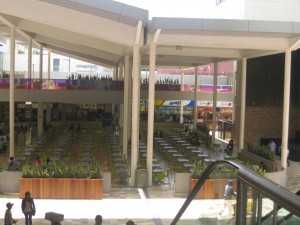

Outside the metropolitano path (i.e., getting to the rest of Lima), transit is based almost entirely on combis – minivan/buses that can seat around 20 people but fit at least 50 when everyone’s packed in like sardines. Destinations are painted on the sides of the vehicles and there is always a cobrador (collecter) – his/her job is to yell out destinations and routes, and collect money. Even though they’re often willing to give us more information, considering how we don’t know the streets of Lima very well, we never fully understand which combi to choose or where we’ll end up. Needless to say, we got to know a lot of Lima in a short amount of time hopping on and off combis and finally started seeing patterns and familiar places. A couple more trips and we’ll be Lima experts!
Here is my last post from Peru. We presented the final results to all the organizations we’re working with, I’ve said all my goodbyes, and tomorrow I leave Huancayo soil for who knows how long. Then one week left, relaxing in Lima, before I say goodbye to the country of Peru. Can’t wait to see all of you again soon!
- 1
- 2
Copyright © 2024 Samantha Bangayan | Sitemap | Disclosure Policy | Comment & Privacy Policy
All articles and photos in this blog are licensed under the Creative Commons Attribution License CC BY-NC-ND 3.0.
